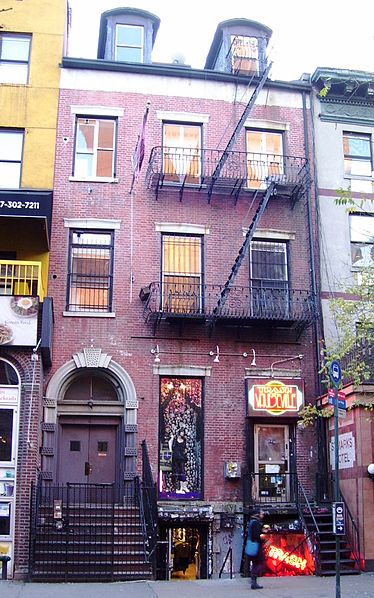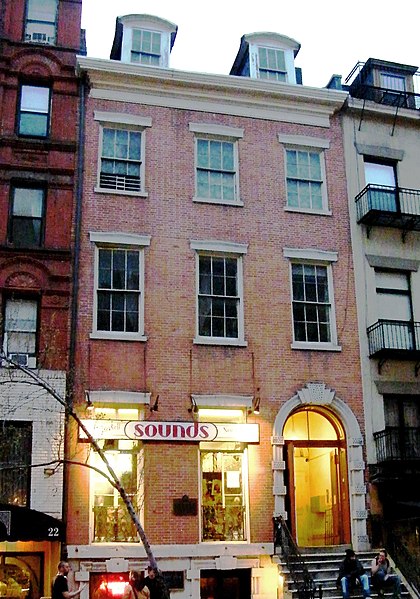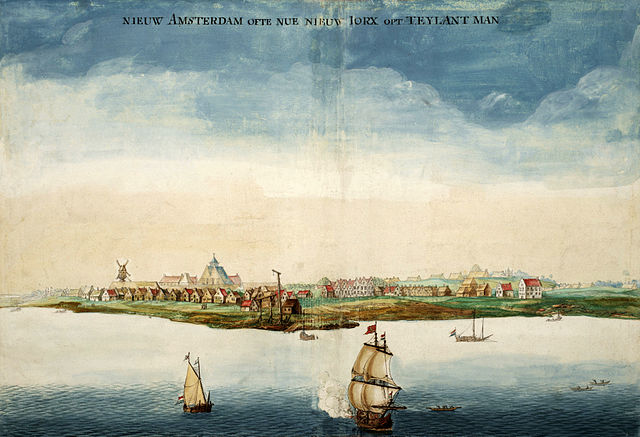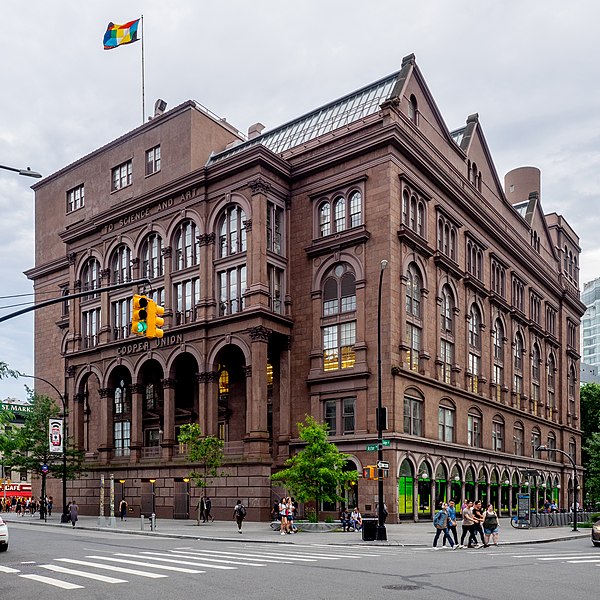The East Village is a neighborhood on the East Side of Lower Manhattan in New York City, United States. It is roughly defined as the area east of the Bowery and Third Avenue, between 14th Street on the north and Houston Street on the south. The East Village contains three subsections: Alphabet City, in reference to the single-letter-named avenues that are located to the east of First Avenue; Little Ukraine, near Second Avenue and 6th and 7th Streets; and the Bowery, located around the street of the same name.
Second Avenue and 6th Street, facing south, photographed in 2005
Stuyvesant Street, one of the neighborhood's oldest streets, in front of St. Mark's Church in-the-Bowery. This street served as the boundary between boweries 1 and 2, owned by Peter Stuyvesant.
Hamilton-Holly House
Daniel LeRoy House
Lower Manhattan, also known as Downtown Manhattan or Downtown New York, is the southernmost part of Manhattan, the central borough of New York City. The neighborhood is the historical birthplace of New York City and for its first 225 years was the entirety of the city. Lower Manhattan serves as the seat of government of both Manhattan and the entire City of New York. Because there are no municipally defined boundaries for the neighborhood, a precise population cannot be quoted, but several sources have suggested that it was one of the fastest-growing locations in New York City between 2010 and 2020, related to the influx of young adults and significant development of new housing units.
Lower Manhattan, including Wall Street, anchoring New York City's role as the world's principal fintech and financial center, with One World Trade Center, the tallest skyscraper in the Western Hemisphere
New Amsterdam, centered in what eventually became Lower Manhattan, in 1664, the year England took control and renamed it New York
Peter Stuyvesant
Cooper Union at Astor Place, one of Lower Manhattan's most storied buildings, where Abraham Lincoln gave his famed Cooper Union speech on February 27, 1860








